Book Post 29: 3-9 March 2019
At the beginning of the week I post some of the books I have received recently. In today’s Book Post 29 included are some of the titles I have received in the past few weeks.
11 March 2019
At the beginning of the week I post some of the books I have received recently. In today’s Book Post 29 included are some of the titles I have received in the past few weeks.
11 March 2019

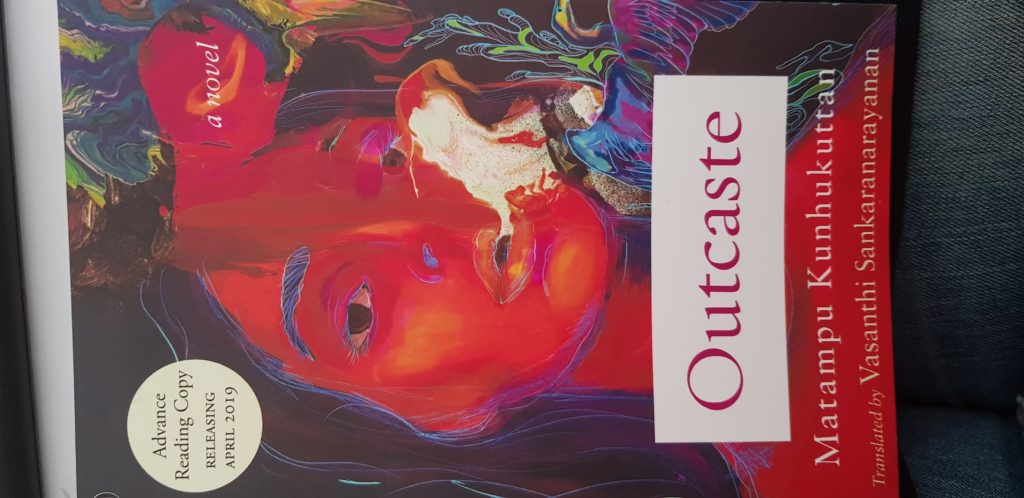











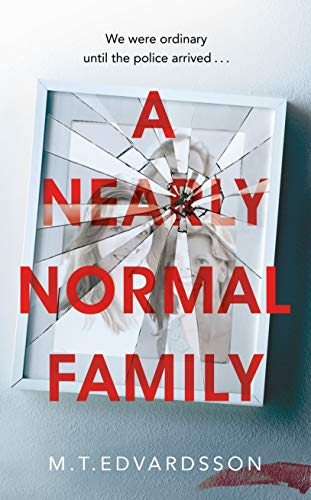
I wrote a long essay on India’s women writers from the early 20th century to today for Bookwitty. Here is an extract from the essay:
India has a tradition of fine women writers, and some of the earliest established names among them were also pioneers in fields beyond literature. Roekya Sakhawat Hossein (1880-1932) was a leading Bengali feminist in at the turn of the 20th century. Her sci-fi utopian novella, Sultana’s Dream (1905), was decades before her time and is a delight to read even now. Cornelia Sorabji (1866-1954) was both the first woman to read law at Oxford, and the first Indian national to study at a British university. During her career as the first female lawyer in India, she advocated for women in purdah and children. She wrote a dozen books including her memoirs, India Calling (1934). Sarojini Naidu (1879-1949) known as the “Nightingale of India,” was not only a poet, but also the first female governor of an Indian state, and the first woman president of the Indian National Congress. Her debut collection of poetry, The Golden Threshold, was published in 1905.

Despite our strong tradition of women writers in the early 20th century, to my mind it was the 1974 publication of the “Towards Equality” Status of Women in India Report that marked a watershed moment for women’s movements, and in turn, women’s literature. Though Indira Gandhi, the first woman prime minister, had been in power for years, it was the Report that gave more women a voice and an opportunity to express themselves.
Another literary turning point came in 1984, when Indira Gandhi was assassinated and thousands of Sikhs were massacred in retaliation. For the older generations, this violence brought back memories of the 1947 Partition of India; young writers and social activists including Urvashi Butalia began recording their stories. Butalia eventually wrote a seminal book, Other Side of Silence (2000), based on these oral histories as well as her own family’s story of moving to India from Lahore, now in Pakistan. Around the same time Ritu Menon and Kamla Bhasin’s groundbreaking Borders and Boundaries (1998) was published, documenting women’s experiences of Partition, about which until then it seemed a collective amnesia had existed.
1984’s violence and revisiting of the past coincided with a maturation of the Indian publishing industry. In that year, Urvashi Butalia and Ritu Menon set up the first independent women’s publishing firm in India (and indeed, in all of Asia), Kali for Women. They looked at a range of literature from fiction to non-fiction, including reportage and oral histories. Kali for Women, and its founders’ subsequent projects, Zubaan Books and Women Unlimited, have published many women writers in original English and in translation, such as the brilliant short story and spec-fic writer Manjula Padmanabhan (Three Virgins, 2013) food and nature writer-cum-illustrator and delightful storyteller, Bulbul Sharma (Eating Women, Telling Tales, 2009), environmentalist Vandana Shiva (Staying Alive, 1998), and numerous other writers, historians and freedom fighters.

Along with independent publishers, little magazines were on the rise, while multinational publishers like HarperCollins and Penguin also began establishing offices in India. Meanwhile, a growing recognition that the work of women writers had sales potential meant more opportunities for them to be published. In 1992, Oxford University Press (OUP) India published an unprecedented memoir by a Tamil Dalit Catholic nun, Bama, who had left the order and returned home. Karukku proved to be a bestseller, and has remained in print. At this time OUP India also published the seminal volumes on Women Writing in India: Volume 1: 600 B.C. to the Early Twentieth Century(1991) and Volume 2: The Twentieth Century (1993), a collection of hundreds of texts representing the rich variety of regions and languages in India.
Indian women’s writing hit a new high when Arundhati Roy won the Booker Prize for her 1997 debut novel, The God of Small Things, exploring forbidden love in Kerala. (Roy’s second novel, 2017’s The Ministry of Utmost Happiness, addresses some of the most devastating events in India’s modern history. It has enjoyed a global release with enviable media hype, further demonstrating the remarkable progress in how women’s writing is received by critics and the public).

Soon, an increasing body of women writers representative of groups that have been marginalised on the basis of sexuality, language, caste, and religion began to be published. These included Urmila Pawar(The Weave of My Life, 2009), and Tamil Muslim poet Salma whose memoir The Hour Past Midnight (2009) was made into a documentary (Salma) and screened at the Sundance festival. Once housemaid Baby Haldar’s memoir, published in English 2006 as A Life Less Ordinary, became an international bestseller, many more memoirs and biographies began to be published—including those of novelist and entrepreneur Prabha Khaitan, academic and activist Vina Mazumdar, actress and singer Kana Devi, trans activist A. Revathy, and activist and actress Shaukat Kaifi.
Such robust publishing by and for women has ensured that the contemporary generation of writers is far more confident of their voices, experimenting with form as they explore a range of issues.
In particular, these writers are exploring and interrogating the concept of the strong woman. Most of these stories depict an ordinary woman negotiating her daily space, thus defining herself and by extension living her feminism, whether she chooses to acknowledge it or not. Just a few of the modern writers who are contributing to this conversation in English are: Namita Gokhale (Things to Leave Behind, 2016), (Chitra Bannerjee Divakurni (Palace of Illusions, 2008), Balli Kaur Jaswal (Erotic Stories for Punjabi Widows, 2017), Scaachi Koul (The One Day We’ll All Be Dead and None of This Will Matter, 2017), and Ratika Kapur (The Private Life of Mrs Sharma, 2015).
Adding to this conversation, there are many relevant writers now becoming available in translation, including Malika Amar Shaikh (I Want to Destroy Myself, 2016—more on this memoir below), and Nabaneeta Dev Sen (Sheet Sahasik Hemantolok: Defying Winter, 2013).

A number of women writers are addressing family and domestic issues with humor, notably Manju Kapur with Home (2006), her Jane Austen-like novel about family dynamics; Andaleeb Wajid with My Brother’s Wedding (2013), a gorgeous novel about the shenanigans of organising a Muslim wedding; celebrity Twinkle Khanna with Mrs Funnybones (2015), based on her delightful newspaper column; and Veena Venugopal with a powerful collection about The Mother-in-Law: The Other Woman in your Marriage (2014).
Meanwhile, other authors have been exploring the theme of the strong woman in harrowing—though by no means unusual—circumstances. Samhita Arni retells the Mahabharata war saga from a woman’s point of view in Sita’s Ramayana (2011). K R Meera’s multi-layered novel Hangwoman (published in English in 2014) is about a woman executioner who inherited the job from her father. Meena Kandaswamy’s autobiographical novel When I Hit You: Or, A Portrait of the Writer as a Young Wife (2017) reveals devastating and isolating violence in a marriage. In the same vein, Malika Amar Shaikh’s aforementioned I Want to Destroy Myself: A Memoir explores the horror of living with a man who in his public life spoke out for the rights of the oppressed, but showed none of this humanity at home.
Building on the tradition of more than a century, today there is a long list of women writers in the Indian sub-continent who are feisty, nuanced in their writing and yet universal in many of the issues they share. They are fully engaged with themes such as independence, domesticity, domestic violence, professional commitments, motherhood, parenting, sexual harassment, politics, and identity. This is undoubtedly a vibrant space of publishing, and this article has just about explored tip of the proverbial iceberg.
For more recommendations, please explore the Related Books carousel below. And as always, please join the conversation: use the comments section to add any further books to the list.
“India’s Women Writers, from the Early 20th Century to Today” , published on Bookwitty ( 3 August 2017)
10 August 2017
(Thank you for the response to my inaugural newsletter. Please feel free to write: jayabhattacharjirose1 at gmail dot com )
 The biggest news in terms of business deals has been the acquisition of TATA-owned publishers Westland by Amazon. (http://bit.ly/2fjVVCP) Earlier this year Amazon had a bought a significant minority stake in Westland but last week they bought the company for a purportedly Rs 39.8 crores or approximately $6.5 million. ( http://bit.ly/2fzdfrJ ) Westland has a history of over 50 years in retail, distribution and publishing. It is an amalgamation of two companies, Westland Books and EastWest Books (Madras). “Amazon’s roots are in books and we are excited to be part of that team in the next phase of our journey,” Westland CEO Gautam Padmanabhan said. The publishing list of Westland, its imprints Tranquebar and EastWest, and imprint extension Mikros, include bestselling authors Amish Tripathi, Ashwin Sanghi, Rashmi Bansal, Rujuta Diwekar, Preeti Shenoy, Devdutt Pattanaik, Anuja Chauhan and Ravi Subramanian, among others. This deal highlights the growing significance of India book markets — the third largest English language and with each regional language being of a substantial size too. It will also have an effect on how publishers realign themselves to create strategically good content which makes for good cultural capital but also astute business sense.
The biggest news in terms of business deals has been the acquisition of TATA-owned publishers Westland by Amazon. (http://bit.ly/2fjVVCP) Earlier this year Amazon had a bought a significant minority stake in Westland but last week they bought the company for a purportedly Rs 39.8 crores or approximately $6.5 million. ( http://bit.ly/2fzdfrJ ) Westland has a history of over 50 years in retail, distribution and publishing. It is an amalgamation of two companies, Westland Books and EastWest Books (Madras). “Amazon’s roots are in books and we are excited to be part of that team in the next phase of our journey,” Westland CEO Gautam Padmanabhan said. The publishing list of Westland, its imprints Tranquebar and EastWest, and imprint extension Mikros, include bestselling authors Amish Tripathi, Ashwin Sanghi, Rashmi Bansal, Rujuta Diwekar, Preeti Shenoy, Devdutt Pattanaik, Anuja Chauhan and Ravi Subramanian, among others. This deal highlights the growing significance of India book markets — the third largest English language and with each regional language being of a substantial size too. It will also have an effect on how publishers realign themselves to create strategically good content which makes for good cultural capital but also astute business sense.
For more on the significance of such an acquisition read Bharat Anand’s analysis of AT&T & Time Warner merger in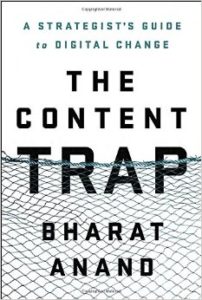 HBR. (http://bit.ly/2feLlOP ) It is a marriage between content and distribution, organizations and tech companies. “Content is an increasingly important complement for every one of the tech companies.” Bharat Anand is the Henry R. Byers Professor of Business Administration at Harvard Business School, where he’s taught media and corporate strategy for 19 years. He is the author of the recently released The Content Trap: A Strategist’s Guide to Digital Change.
HBR. (http://bit.ly/2feLlOP ) It is a marriage between content and distribution, organizations and tech companies. “Content is an increasingly important complement for every one of the tech companies.” Bharat Anand is the Henry R. Byers Professor of Business Administration at Harvard Business School, where he’s taught media and corporate strategy for 19 years. He is the author of the recently released The Content Trap: A Strategist’s Guide to Digital Change.
Publishing business strategies will be bolstered by the GOI announcement as part of the Digital India movement that “Handsets mandated to support Indian language keyboards July 1st 2017” All handsets being manufactured, stored, sold and distributed in India will have to support the inputting of text in English, Hindi and at least one more official Indian language (of 22), and support reading of text in all these languages. (http://bit.ly/2fGxrbb ) In Medianama’s analysis this will speed up the switch in India to smartphones (and featurephones), because they have that capability to use Indic languages using the operating system. ( http://bit.ly/2feSTRG ) In the long run, good news for publishers if their content is gold.
14 November is celebrated as Children’s Day in India. Nearly 50% of the 1.3 bn population in India is below the age of 25 years –a sizeable reading market. As the first-ever Kids & Family Reading Report, India edition by Scholastic India notes that 86% children read the books they select but points out that 71 per cent of kids were currently reading a book for fun. This is the way it should be to create a new generation of readers. (http://scholastic.co.in/readingreport )
Jaya Recommends
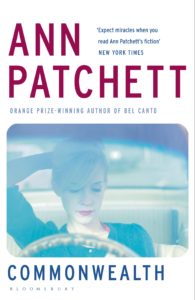 Ann Patchett’s incredibly stunning novel of families and the writing experience Commonwealth
Ann Patchett’s incredibly stunning novel of families and the writing experience Commonwealth 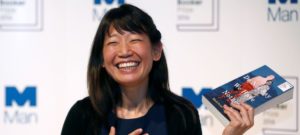 (Bloomsbury)
(Bloomsbury)
Jonathan Eig’s fascinating account of The Birth of the Pill (Pan Books, Pan MacMillan India)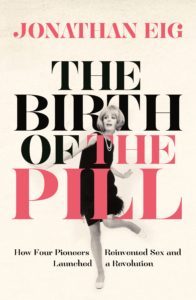
Translating Bharat Reading India edited by Neeta Gupta. A collection of essays discussing the art of translating and what constitutes a good translation. (Yatra Books)
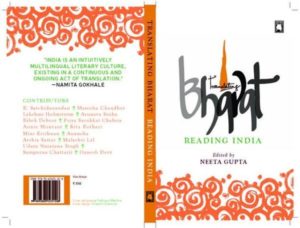 Madeleine Thien’s extraordinary novel Do Not Say We Have Nothing ( My interview with the author: http://bit.ly/2eX5meG )
Madeleine Thien’s extraordinary novel Do Not Say We Have Nothing ( My interview with the author: http://bit.ly/2eX5meG )
On literature and inclusiveness ( http://bit.ly/2fbp9Ym )
Legendary publisher 97-year-old Diana Athill’s latest volume memoir, a delicious 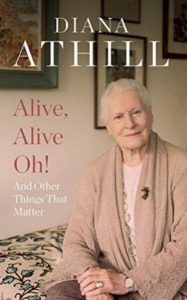 offering Alive, Alive Oh!
offering Alive, Alive Oh!
Book launches:
Amruta Patil ( HarperCollins India)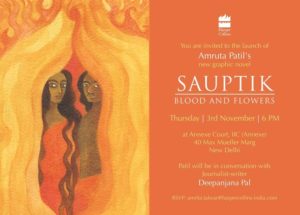
Ritu Menon’s Loitering with Intent: Diary of a Happy Traveller on 5th November 2016, IHC (Speaking Tiger)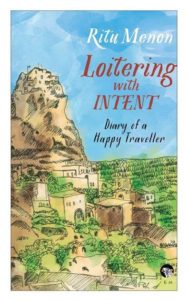
Craig Mod’s book launch in Tokyo: http://kck.st/2fk29Tp
Lit fests: ILF Samanvay: The IHC Indian Languages Festival ( 5-7 Nov 2016)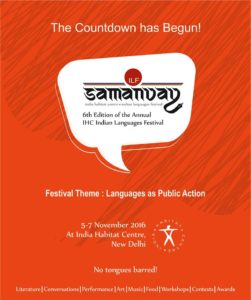
Literary Prize: Haruki Murakami wins this year’s Hans Christian Andersen Literature Award ($74,000). The Hans Christian Andersen Literary Award is not to be confused with the Hans Christian Andersen Award (or medal)— often regarded as the “Little Nobel Prize”— instituted in 1956 to recognize lasting contributions in the field of children’s literature. (http://bit.ly/2eC70iI ) In his acceptance speech he warned against excluding outsiders (http://wapo.st/2fjZ31u )
World Literature Today, the award-winning magazine of international literature and culture, announced Marilyn Nelson as the winner of the 2017 NSK Neustadt Prize for Children’s Literature. Awarded in alternating years with the prestigious Neustadt International Prize for Literature, the biennial NSK Prize ( $25,000) recognizes great achievements in the world of children’s and young-adult storytelling. ( http://bit.ly/2fdIQhX )
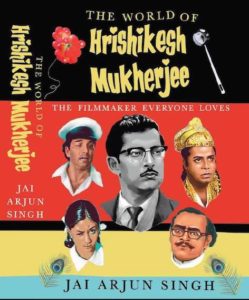 Jai Arjun Singh’s The World of Hrishikesh Mukherjee has been given the Book Award for Excellence in Writing on Cinema (English) at the Mumbai Film Festival.
Jai Arjun Singh’s The World of Hrishikesh Mukherjee has been given the Book Award for Excellence in Writing on Cinema (English) at the Mumbai Film Festival.
Interesting book links:
A Phone Call from Paul , literary podcast for @LitHub done by Paul Holdengraber, NYPL is worth listening to. Here is the latest episode where Paul is in conversation with Junot Diaz. (http://bit.ly/2fxF1p8 )
On the Jaffna library: http://bit.ly/2eC7vtb
Iran and Serbia sign MOU to enhance book publishing: http://bit.ly/2fGykAK
How one Kiwi author is making $200,000 a year publishing romance novels online: http://bit.ly/2fdVQEh
Bengaluru barber popularises Kannada literature: http://bit.ly/2eP8N6X
Literary River, Literature vs Traffic installation: http://bit.ly/2f3dpUD
Six wonderful ways feminist publisher Virago shook up the world of books http://bbc.in/2efJYgs
Turkish Government closes 29 publishers http://bit.ly/2f35AhE
3 November 2016
Shobha Rao’s Unrestored Woman is a collection of short loosely interlinked stories first published by Virago Press and released in the Indian subcontinent by Hachette. The stories are classic in structure but the plot and treatment fairly unconventional. There are a range of stories inevitably dealing with Indian subcontinent during British Raj or at the time of Partition. With a South Asian name one approaches the collection assuming it would be of a particular style only to discover the writing is very modernist — bold, sharp, exploratory. It is no wonder then that T. C. Boyle included “Kavitha and Mustafa” in his anthology of Best of Ameican Fiction 2015. Although Shobha Rao is a writer of promise Unrestored Woman will forever remain her unfinished canvas in her yet-to-come oeuvre. Her justifiable admiration for Ritu Menon and Kamla Bhasin’s seminal work on Partition Borders and Boundaries: Women in India’s Partition is very evident but it is preventing Shobha Rao from making her stories her own. Instead what comes through is the strong desire to assert her South Asian roots, her sensitivity to the issues and her attempt to engage with them but alas is unable to convey it with a passion. Aamer Hussein in his review of the book in The Independent is correct in saying that Shobha Rao is on “a firmer ground as a realist”. ( 6 March 2016 http://ind.pn/1sSJaWq )
Maybe the author is working on a full-length manuscript like a novel or historical fiction on women and Independence/ Partition of the subcontinent that will have more depth than the few sketches presented here. Having said that Shobha Rao is a writer to keep on one’s literary radar.
Shobha Rao An Unrestored Woman and other stories Virago Press, an imprint of Little, Brown Book Group, Hachette India, 2016. Pb. pp. 244. Rs. 399
3 June 2016
 (Ritu Menon, founder, Women Unlimited is organising this fantastic literary festival in New Delhi. It is delicious programming. I was so looking forward to attending it but alas, I cannot. Thanks to the traffic diversions set up by the Delhi Police to allow the Art of Living three-day cultural festival to take place without a hitch on the Yamuna river bed. I am most disappointed. So those who can attend, must!)
(Ritu Menon, founder, Women Unlimited is organising this fantastic literary festival in New Delhi. It is delicious programming. I was so looking forward to attending it but alas, I cannot. Thanks to the traffic diversions set up by the Delhi Police to allow the Art of Living three-day cultural festival to take place without a hitch on the Yamuna river bed. I am most disappointed. So those who can attend, must!)
Palestine in India: A Writers’ Colloquium
March 11-13, 2016
Main Auditorium
India International Centre
Programme
Friday, March 11, 2016, 4:00 – 5:30 p.m.
Main Auditorium, IIC
Film Screening: The Time That Remains
(109 min; 2009; DVD; English subtitles)
Director: Elia Suleiman
Recipient of the Jury Grand Prize, Asia Pacific Screen Awards 2009; Audience Award & Silver Alhambra, Grenada Film Festival Cine del Sur 2010; ACCA Jury Prize & Award for Best Director, Mar del Plata Film Festival 2009
Elia Suleiman’s memoir of his family under Israeli occupation continues the mood of his earlier Divine Intervention (2002).
Friday, March 11, 2016, 6:30 p.m.
Main Auditorium, IIC
Memory & Imagination: A discussion on writing and resistance; on home and exile; on seeking, finding… with Mourid Barghouti and Sharif Elmusa.
Moderated by Ahdaf Soueif & Ritu Menon
Saturday, March 12, 2016, 3:00 – 4:30 p.m.
Main Auditorium, IIC
Counterfacts on the Ground: A discussion on living under occupation in Gaza and the West Bank, and on writing back to subvert suppression.
Laila El-Haddad and Adania Shibli talk to Raghu Karnad, and read from their work
Saturday, March 12, 2016, 4:30 – 5:30 p.m.
Main Auditorium, IIC
Palestine in Publishing: A discussion on the challenge of publishing and selling Palestinian writing in, and outside, Palestine.
Michel Moushabeck, Interlink, USA; Mahmoud Muna, Educational Bookshop, Jerusalem; Sudhanva Deshpande, Leftword Books, New Delhi & Ritu Menon, Women Unlimited, New Delhi exchange experiences and views, talk about difficulties and how they overcome them, intelligently!
Saturday, March 12, 2016, 6:30 – 8:00 p.m.
Main Auditorium, IIC
“The Blue Between Sky and Water”
Susan Abulhawa reads from her new book and discusses it with Githa Hariharan
Sunday, March 13, 2016, 2:30 – 4:00 p.m.
Main Auditorium, IIC
Poetry Reading: “My Country: Distant as My Heart from Me”
Mourid Barghouti and Tamim Albarghouti read their poetry in a mesmerising jugalbandhi
Sunday, March 13, 2016, 4:00 – 5:30 p.m.
Main Auditorium, IIC
“Stuck in Historical Amber?”: Susan Abulhawa and Sharif Elmusa speak about what it means to be “out of time, out of place”, to be never at home, and much else besides.
A free-wheeling conversation with well-known book critic, Sunil Sethi
Sunday, March 13, 2016, 6:30 – 8:00 p.m.
Main Auditorium, IIC
Double Bill!!
“Palestine: Nothing Makes Sense, Why Should I?”
Suad Amiry performs the tragi-comedy of her situation as a Palestinian under Occupation in the West Bank.
Book launch: My Damascus. Suad Amiry takes the reader by the hand and walks her through the city of her childhood, interleaving Damascus in history from the 1860s to the 2000s, with family history, of roughly the same period. A tour de force.
Ahdaf Soueif is the mistress of ceremonies.
11 March 2016
( My monthly column, Literati, in the Hindu Literary Review was published online ( 2 August 2014) and in print ( 3 August 2014). Here is the url http://www.thehindu.com/books/literary-review/stories-on-conflict/article6274928.ece . I am also c&p the text below. )
 Off late images of conflict dominate digital and print media– injured children, rubble, weeping people, vehicles blown apart, graphic photographs from war zones. We live in a culture of war, impossible to get away from. What is frightening is the daily engagement we have with this violence, to make it a backdrop and a “normal” part of our lives. The threshold of our receptivity to it is lowering; the “appetite” for violence seems to be increasing.
Off late images of conflict dominate digital and print media– injured children, rubble, weeping people, vehicles blown apart, graphic photographs from war zones. We live in a culture of war, impossible to get away from. What is frightening is the daily engagement we have with this violence, to make it a backdrop and a “normal” part of our lives. The threshold of our receptivity to it is lowering; the “appetite” for violence seems to be increasing.
Take partition of the sub-continent in 1947. Vishwajyoti Ghosh, curator of the brilliant anthology of graphic stories with contributions from three countries, This Side, That Side, remarks, “Partition is so much a part of the lives of South Asians.” It exists in living memory. Generations have been brought up on family lore, detailing experiences about Partition, the consequences and the struggle it took refugees to make a new life. For many years, there was silence. Then in India the communal riots of 1984 following the assassination of Mrs Indira Gandhi happened. For many people of the older generation who had experienced the break-up of British India it opened a Pandora box of memories; stories came tumbling out. It was with the pioneers of Partition studies–Ritu Menon, Kamla Bhasin and Urvashi Butalia–that this tumultuous time in history began to make its mark in literature.
Contemporary sub-continental literature comprises of storytellers who probably grew up listening to stories about conflict in their regions. It is evident in the variety, vibrancy and strength discernible in South Asian writing with distinct styles emerging from the nations. There is something in the flavour of writing; maybe linked to the socio-political evolution of the countries post-conflict—Partition or civil unrest. In India, there is the emergence of fiction and nonfiction writers who have a sharp perspective to offer, informed by their personal experiences, who are recording a historical (and painful) moment. Recent examples are Rahul Pandita’s Our Moon has Blood Clots, Amandeep Sandhu’s Roll of Honour, Chitrita Banerji’s Mirror City, Sujata Massey’sThe City of Palaces, Sudipto Das’s The Ekkos Clan, Shahnaz Bashir’s The Half Mother and Samanth Subramanian’s The Divided Land , a travelogue about post-war Sri Lanka. In Sri Lankn literature conflict is a constant backdrop, places and names are not necessarily always revealed or easily identified, but the stories are written with care and sensitivity. Shyam Selvadurai in his introduction to the fascinating anthology of varied examples of Sri Lankan literature, Many Roads to Paradise writes “In a post-war situation, this anthology provides an opportunity to build bridges across the divided communities by allowing Sri Lankans access to the thoughts, experiences, history and cultural mores of their fellow countrymen, of which they have remained largely ignorant due to linguistic divides.” Contributors include Shehan Karunatilaka ( The Chinaman), Nayomi Munaweera (Island of a Thousand Mirrors) and Ashok Ferrey ( The Colpetty People and The Professional). Bangladeshi writers writing in a similar vein are Shaheen Akhtar’s The Search ( translated by Ella Dutta), Mahmudul Haque’s Black Ice (translated by Mahmud Rahman), Tahmima Anam The Good Muslim and Neamat Imam’s The Black Coat. Pakistani Nadeem Aslam’s last novel Blind Man’s Garden is a searing account of the war in Afghanistan and its devastating effect on the lives of ordinary people. In his interview with Claire Chambers for British Muslim Fictions, Nadeem Aslam said his “alphabet doesn’t only have 26 letters, but also the 32 of the Urdu alphabet, so I have a total of 58 letters at my disposal”. Kamila Shamsie’s A God in Every Stone uses fiction (the story is set during the World Wars) to comment upon contemporary socio-political events (Peshawar). Earlier this year Romesh Gunaseekera told me while discussing his latest novel, Noontide Toll “All over the world, including in India, people are trying to grapple with the memory of conflicts, and trying to find a way in which language can help us understand history without being trapped in it.”
From Homer’s The Odyssey onwards, recording war through stories has been an important literary tradition in conveying information and other uses. Today, with conflict news coming in from every corner of the world and 2014 being the centenary year of World War I, publishers are focusing upon war-related literature, even for children. For instance, Duckbill Books new imprint, NOW series about children in conflict has been launched with the haunting Waiting Mor, set in Kabul and inspired by a true story. Paro Anand’s No Gun’s at my Son’s Funeral was one of the first stories written in India for young adults that dealt with war, children and Kashmir; it is soon to be made into a feature film. All though ninety years after the first book was published Richmal Crompton’s Just William series, about a mischievous 11-year-old boy set during WWI, continues to be a bestseller! The culture of war has been inextricably linked to literature and media. As the protagonist, Adolf Hitler says in Timur Vermes must-read debut novel Look Who’s Back “after only a handful of days in this modern epoch, I had gained access to the broadcast media, a vehicle for propaganda”.
2 August 2014
 Mr S.K. Ghai, Managing Director, Sterling Publishers (P) Ltd is responsible for the Institute of Book Publishing and Publishing Today, A monthly of the book industry and its professionals. In Vol. No. 7, No. 8 & 9, Jul – Aug 2013 ( http://www.ibpindia.org/p/Publishing-Today-July-August-2013 ) he interviewed me. This is what he wrote in his introduction: “For One to One I have interviewed Jaya Bhattacharji Rose, International publishing and literary consultant, there are a very few professionals who write on publishing regularly and she is one of them and having a regular column in Business World. She is quite active on social media and had over 250,000 visitors in less than a year.” I am c&p the interview below.
Mr S.K. Ghai, Managing Director, Sterling Publishers (P) Ltd is responsible for the Institute of Book Publishing and Publishing Today, A monthly of the book industry and its professionals. In Vol. No. 7, No. 8 & 9, Jul – Aug 2013 ( http://www.ibpindia.org/p/Publishing-Today-July-August-2013 ) he interviewed me. This is what he wrote in his introduction: “For One to One I have interviewed Jaya Bhattacharji Rose, International publishing and literary consultant, there are a very few professionals who write on publishing regularly and she is one of them and having a regular column in Business World. She is quite active on social media and had over 250,000 visitors in less than a year.” I am c&p the interview below.
4 Sept 2013
SKG You have been interviewing publishers, authors; is it the first time that you are being interviewed?
JBR No. Not at all. Some of the interviews that come to mind are by Samit Basu in 2006 (http://samitbasu.com/2006/07/03/jaya-bhattacharji-interview/) and by Anupama Krishnakumar in 2012 (http://www.sparkthemagazine.com/?p=4379).SKG When, how and why did you choose publishing as a career?
JBR I cannot even recall when I fell in love with books. But I wanted to delve in to publishing from as long as I can remember.SKG You were once selected in the editorial team of Penguin, but you decided not to join. Any reason?
JBP Yes I was. This was immediately after I had completed my BA (Hons) English from Jesus and Mary College. David Davidar had interviewed me, Renuka Chatterjee called offering me the job. But I refused since I decided to pursue my MA (English) at St. Stephen’s College.SKG You prefer to be freelancer as compared to being in a regular job. Any reason?
JBR I prefer being a freelancer since it allows me to balance my time between professional commitments and bringing up my daughter Sarah Rose. Plus the independence it brings allows me the freedom to comment on the industry, without any bias. It can be challenging at times, but I certainly prefer it.SKG I remember meeting you briefly at Zubaan. How long did you work there and any memorable experiences or incidents that you would like to share?
JBR I joined Zubaan the day it rose from the ashes of Kali for Women. I was there for more than 4 years, but those were the formative years. It was during this time that the significant books like Baby Halder’s A Life Less Ordinary, Anil Menon’s The Beast with a Million Feet and Kunzang Choden’s The Circle of Karma were published. I enjoyed working on various projects. Some that come to mind immediately are creating a mini author website for Kunzang Choden. It was done at a time when such intiatives were still rare. (http://www.zubaanbooks.com/circleofkarma/) I also helped in the branding of Zubaan by circulating monthly newsletters, creating a database, conceptualising and launching the official website (zubaanbooks.com); inheriting the womenwriting.com website from the British Council and revamping it (http://www.womenswriting.com/WomensWriting/AboutProject.asp); curating the visual history of the women’s movement in India via posters called PosterWomen (http://posterwomen.org/Posterwomen/ ) ; helping out with the Words of Women series at the India Habitat Centre and lots more. It was definitely a packed and exciting schedule.There are so many memories to share, but difficult to choose one.SKG You also worked for Routledge and then Puffin for a short while – any special memories ?
JBR I worked as Editorial Manager, South Asia, Journals for Routledge, Taylor and Francis and as a Consultant Editor, Puffin Books India. Both the assignments were very different to each other. The journals assignment was an eye opener since it taught me a great deal about academic publishing, especially the methodical manner in which journals are published.Whereas with Puffin Books the joy of working with children’s and YA literature was thrilling. It is a genre that I have worked with ever since the 1990s, from the time I was asked to be the Guest Editor for the Special issue of The Book Review. It was an issue published every November. I expanded the focus to include literature from South Asia and got publishers to send in review copies from abroad. All this was done before the internet and emailing was possible. I remember even getting the third volume of Harry Potter. It was mailed from London and arrived a couple of weeks after it was released. Yet the review copy reached me a few months before it was released in India. A far cry from when the last volume in the series was released. It had a simultaneous release in India and UK.SKG You have interviewed many publishers – national and international CEO’s like Naveen Kishore-Seagull, Liz Calder-Bloomsbury, Peter Booth- Wiley. Any unique experience you would like to share?
JBR With every publishing professional I meet whether from India or abroad, I enjoy my interactions. It is learning, sharing of experiences and understanding how the business works. Many times I continue to be astounded at how the basics of the business remain the same. It is only the technology of production and communication that changes. Of the three you mentioned I learned a great deal about translations from Naveen Kishore; from Liz Calder what it takes to be a woman publisher, setting up Women in Publishing, co-fouding Bloomsbury Publishing, how her firm discovered J K Rowling, establishing the Paraty festival in Brazil etc; with Peter-Booth Wiley it was discovering how a successful family business operates and continues to be ahead in the game of publishing. He is the sixth generation of the Wiley family who is managing the business, 200 years after it was founded.SKG When you assess and recommend manuscripts to publishers, what are the points you generally highlight?
JBR It really depends upon the genre and style of writing. It is very difficult to comment in general terms. But I think it has to be a fine balance between what is a good story/narrative and whether it will work in the market.SKG Your comments on the recent amendments to the copyright act?
JBR The recent amendments to the copyright act were mostly in favour of the music industry except for the clause about the use of photographs and images. The parallel imports clause too that was causing much concern in India has now been referred to a Parliamentary committee for review.SKG Your comments on the highlights/missing points in the recently formulated India’s National Book Promotion Policy?
JBR I wrote about this in my column. Here is the link: https://www.jayabhattacharjirose.com/jaya/2013/08/01/national-book-promotion-policy-where-are-we-nov-2011/SKG What are your views on India’s digital publishing and how do you think they can monetize ?
JBR I don’t think anyone really has a clear answer to this. Digital publishing, IMHO, should be seen as a unifying factor in publishing. It allows publishers to streamline operations and access various markets that hitherto were inaccessible. Monetization will happen depending upon the publisher’s requirement and an understanding of the market. For now there is a lot of experimentation in the business models of publishing particularly in academic publishing. Trade publishers are as yet to figure out what works for them. If the latter had a system of impact factors as is in journal publishing, probably they would be able to strategically explore and execute alternative streams of revenue generation.SKG You review books regularly. What are your comments on ‹The art of book reviewing›?
JBR Read, read, read. Review books without any biases, but with knowledge, honesty and fairness. All criticism must be constructive, whether positive or negative. Also never damn a book however annoying it may have been to read. The book is an author’s baby. Be kind. And if it has been a pleasure to read, be balanced in your assessment rather than packing your review with hyperbole.SKG Many publishing professionals have godfathers in the industry; do you have one or consider some one who helped/guided you?
JBR Hmm. I am not sure if I have had a godfather. Mentors certainly. Many of them women. I have always been passionate about publishing. But I was fortunate to have been given opportunities to explore publishing by Uma Iyengar and Chandra Chari of The Book Review; Urvashi Butalia of Zubaan; Ritu Menon of Women Unlimited; and Gordon Graham, former Chairman, Butterworth Publishers and Founding Editor, Logos.SKG Where you would like to be after five years?
JBR A successful international publishing and literary consultant and columnist.SKG You know the publishing industry inside out. How do you see the future of book publishing given the current scenario of digital verses print?
JBR I do not see it as a digital versus print game in the publishing industry. I see the entry of digital technology as a game changer that will encourage publishing to evolve to the next level. Initially it will be viewed as a disruptive element since the traditional modes of production, publication and dissemination have been working very well for generations. But to survive in the future, it is important to adopt and adapt.The future of book publishing is not bleak especially for those professionals who are smart about taking up challenges and capitalising upon opportunities. But today there is no scope for complacency. Unfortunately the truth is that to commission, create and produce high quality books you need to have time and be methodical about it. It is a process that cannot be hurried. Yet the consumption patterns of readers are changing so rapidly that publishers need to strike a balance between the two arms of business — commissioning/editorial and marketing/selling. There are many ways to do so. Most importantly exploring new opportunities for revenue generation. It will come from selling the books in innovative ways, accessing new markets but also focusing on good, reliable content, ensuring that the long tail of business continues. Also never forgetting that the core of the business of publishing are the authors. So it is important to manage author relations, irrespective of their being on the A, B or C lists.SKG You are very active on social media networks- Facebook , Twitter, LinkedIn and writing blogs. How useful do you find social media what would be your suggestions for young publishing professionals?
JBR Social Media is an integral part of one’s life now. In order to access, network with like-minded professionals you need to know how to use these platforms. I use them only professionally. But it requires strategy and learning every single day.I started a blog sometime ago focused on publishing and literature. On 27 Aug 2012, I installed a visitor counter. Today, 9 Aug 2013, it shows 2,61,563 visitors. All of these are real digital footprints since I have a SPAM blocker. I am told that it is an “extremely impressive” count.My advice for young publishing professionals is to be passionate about publishing, always be alert and receptive to new ideas, think out of the box, do a bit of homework every single day and definitely use and explore the social media platforms. But by merely plonking stuff on to a platform, without understanding and updating it, will be insufficient. You have to challenge your limits.SKG What are your hobbies?
JBR Cooking/Baking, listening to music – it used to be gardening, painting and playing with my dogs, but no more. No time for the first two and I no longer keep dogs. And I have to add, reading. I actually love it.SKG How would you describe a good book?
JBR Fiction or non-fiction – it has to be one that sustains the reader’s interest till the very end. It cannot be a book where the author polishes the first fifty pages and then forgets about the rest.SKG Apart from manuscripts, do you get the time to read & what do you like to read?
JBR I make the time. Carpe diem is my motto. My reading is eclectic. It can range from periodicals, short stories, fiction, non-fiction, young adult and even picture books. Anything and everything to do with words.SKG In fiction, what makes a bestseller?
JBR Tough question. Does anyone really have an answer to it? If it is the Rs 100 novel or commercial fiction that is extremely popular today in India, then I would attribute it to the conversational style of English used by the authors. The readers are able to comprehend and understand and respond well to the content. But it is not a given that a consumer of a Rs 100 novel can be termed as a “Reader”, one who reads substantially, not necessarily voraciously. For literary fiction it is the quality of the work, the complexity that lies in the treatment of the story. Similarly other genres like translations, science-fiction, children’s literature, YA literature, thrillers, etc will have their own peculiar characteristics that help in determining its viability in the market. Probably the standard for all would be the content should be good, the treatment by the author/translator above par. Technicalities like editing, production quality, distribution, price points also play a crucial aspect in the rapid consumption of the book. If it is a “good” book but unavailable and unaffordable, the whole point of investing time and patience in producing it will be defeated.
| ONE TO ONE with Jaya Bhattacharji RoseInternational publishing and literary consultant who also has a monthly column, “PubSpeak” , in BusinessWorld online. Her blog https://www.jayabhattacharjirose.com/jaya/ has had over 2,50,000 visitors in the 11 months since the visitor counter was uploaded. |
